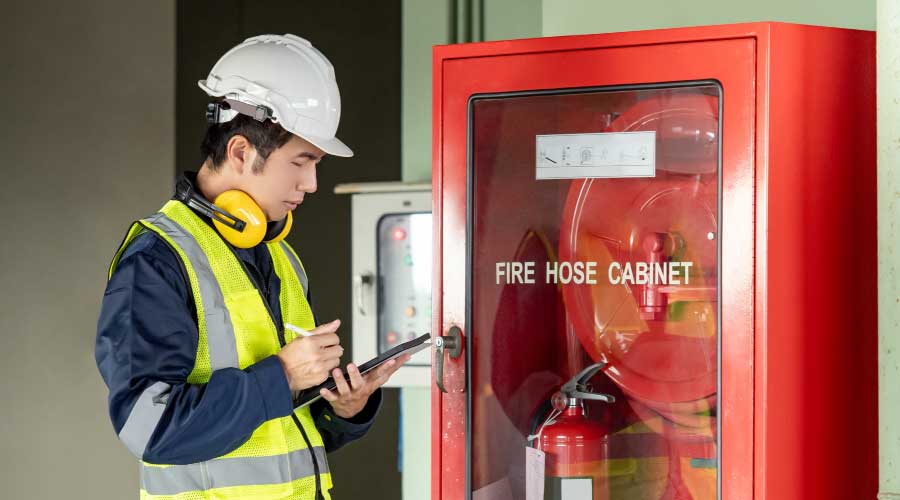Finding Software for a Big Future
How UNLV found maintenance management software that could meet the demands of a rapidly expanding stock of buildings
An overworked computerized maintenance management system (CMMS) often is the first sign that an organization’s rapid growth has reached a critical stage. In these cases, the search for a new CMMS becomes a search not only for a system that meets current needs, but for one that also will be able to handle continued future growth.
Such was the case with the University of Nevada-Las Vegas (UNLV). The university has been experiencing a population boom over the past decade and in 2001 found that its CMMS was unable to meet the demands caused by the campus’ rapid growth and expanding facilities needs.
“As you grow and as things change, you end up with emerging new requirements,” says Frank Lucas, UNLV’s assistant director of work management. “As we looked on the horizon, we were confident that our old system wasn’t going to be able to meet those requirements.” This realization sparked UNLV’s search for a CMMS that would satisfy the maintenance department’s needs, provide the best value for the price, and grow with the organization.
Identifying Needs
“We were producing between 15,000-16,000 work orders when I started at UNLV three and a half years ago,” Lucas says. “We’re now up to 31,000.” While part of that increase resulted from the maintenance department keeping better documentation of its work, most of it has resulted from work generated by the growing enrollment.
“When I started working at UNLV, our campus enrollment was approximately 18,000,” Lucas says. “Now, it is more than 25,000. The enrollment is growing 5-8 percent per year, and we’re adding on square footage as quickly as possible to meet these demands.”
Besides failing to keep up with work orders, the CMMS was inadequate in other key areas.
“There was no place to put a room number,” Lucas says, adding that it also couldn’t segregate the data in the multiple repair centers and didn’t allow users to drill down into the database adequately.
Along with addressing these problems, the university needed a CMMS with additional features that weren’t available when it purchased the previous CMMS, including more user-friendly Web-based technology.
“We wanted a Web-based module so UNLV employees could make a work request and receive immediate feedback,” Lucas says, adding that user friendliness was a driving factor in the purchase decision. The department needed a system that was easy for everyone to learn and use.
Security was another issue determining the final purchase. This led UNLV to find a Web browser package that didn’t use the industry-standard Internet information services.
“This issue became important a few years ago when a hacker was able to shut down systems across the nation,” says Mark Schaffer, the database administrator for UNLV. Hackers aren’t interested in attacking systems that aren’t widespread. As a result, other systems, such as those using a Macintosh operating environment, are less likely to be affected by hackers, Schaffer says.
Lucas says they also wanted a CMMS that ran on a SQL platform, which would allow them to keep the CMMS within the facilities management and planning department.
“We’re very pleased with the SQL implementation,” Schaffer says. “It has been a reliable platform. At times, when the campus system has gone down, our system has continued to work.”
Gathering Input
“Employees from all departments in our division were able to shed a lot of light on needs and wish-list items that would allow them to do their jobs better or more easily,” Lucas says. “For example, employees in the materials warehouse wanted to be able to barcode their parts and use a barcode scanner when issuing or counting inventory. Tradesmen wanted a system that would allow us to use hand-held technology in the future to reduce or eliminate paperwork. They also had input into how shops and trades would be organized in the system so work-order routing would be more efficient. Even small items, like making contact phone numbers mandatory, were raised, as our old system didn’t even provide a dedicated field for phone numbers.”
To help find a system that addressed these requests, department managers, directors, executive directors, shop foremen and help- desk personnel participated in specification discussions. Schaffer adds that he paid attention to comments employees made about the CMMS in both scheduled meetings and informal conversations.
“We outlined our business plan and needs,” Lucas says. “As we found software that matched those needs, they participated in live demos.” Because users at various levels were involved in the decision, the final product gained acceptance more quickly.
Screening Vendors
In addition to specifying the organization’s hardware requirements and ensuring that the new CMMS would work with the campus’ IT system and other networking systems, Schaffer’s role included helping to select the CMMS provider.
“I wanted to make sure the company that we went with was stable and had a long-term history,” Schaffer says. Organizations might select software that performs well but can experience major problems if the supplier isn’t around to provide support. Software vendors have been known to eliminate their CMMS product lines if they are not profitable, often with little notice to their customers, Lucas says.
“So you wake up one morning to find that your CMMS company doesn’t exist,” he says. Lucas advises organizations considering a CMMS purchase to thoroughly research the vendor.
“There are publications and Web sites that list CMMS companies, so we began with these,” Lucas says. “I focused on companies that had a good reputation in the industry based on my past experience and the advice of others.
“I visited vendor Web sites, solicited brochures and demo CDs, and spoke with salespeople. In some cases, salespeople did demos with me over the phone using Web-based applications. In other cases, brochures were given to me by co-workers who had picked them up from trade shows they attended or mailed to me by vendors who heard we were in the market for a new system.”
Lucas also spoke with his peers in maintenance management about applications they used and the aspects of their systems that satisfied and displeased them.
“I also visited the Web sites of other universities to look at their Web-based work-request modules, solicited comments from various trade organizations such as APPA, and asked questions via list serves, direct e-mails, and the telephone,” he says.
Narrowing the Options
To get an in-depth look at each vendor’s product, Lucas scheduled live demonstrations with three companies that met UNLV’s basic requirements.
While many systems initially appear similar and perform the same basic functions, they can operate very differently, he says, so managers specifying a CMMS should learn how each vendor defines particular terms. The meaning of a word can vary among vendors and, as a result, affect the way they refer to system functions.
“For example, scheduling means something different to each vendor,” Lucas says. “To one person, it could mean assigning a craftsman to a work order. To another vendor it could mean routing a work order, and to a third vendor it could mean actually time-slotting a work order with estimates.” Lucas also recommends asking suppliers to identify functions that are part of the core system and those that require the customer to purchase additional modules or customize the system.
“Some companies will tell you ‘We can get it to do whatever you need it to do,’ but for them it’s often a customization process that raises the price,” he says. “It was a real challenge understanding all of the functions that the different systems did, whether these functions were part of the core system, and then determining which vendor is offering the best value for the dollar.
“Prior to the presentations, we jotted down all of the promises that the vendors made. During their live demonstrations, we asked them to show us how these functions worked.”
Adds Schaffer, “There is something obvious that I think some people miss in these kinds of software demonstrations. We are too used to glitches and bugs in computer systems, and people are sometimes too forgiving.”
Schaffer says the demonstrations were scheduled far enough in advance so that vendors had plenty of time to tailor their presentations. Yet two vendors had various technical problems during the demonstrations.
“They would respond to us always, ‘Well that is not important. We’ll make sure that works,’ “ Schaffer says, adding that the excuses left a negative impression on the UNLV staff. “This is my advice to anybody looking to buy a CMMS: If it doesn’t work in the demonstration, they should be skeptical.”
Implementing the System
The department placed heavy focus on implementation because it is the precursor to the success or failure of a new system, Lucas says, adding that a good system can be turned into a mediocre one simply by not doing a good job on the implementation phase.
The chosen vendor conducted administrator training with several UNLV employees at their home offices.
“We discussed our business plan, new processes and procedures, how we envisioned certain features of the CMMS functioning in our environment, how we would put new features to work that we never had before, training, cost accounting, administrative rights and security settings, network configuration, and overall data management, to name a few,” Lucas says. “Because the implementation team leader also had maintenance management experience, he was able to understand how we wanted to operate and suggest ways our new CMMS could accommodate our needs.
“Often times, this translated into several different options, each one having possible pros and cons. This helped us develop an implementation and operating plan.
“As you might expect, the bulk of the implementation process was spent downloading data from our old system into Excel spreadsheets, reconciling and clearing out unwanted data, and restructuring the data to fit the format mandated by the new system,” Lucas says. The implementation team then mapped the spreadsheet items to their new home in the CMMS and imported the data into the system.
“Several people had a hand in preparing this data,” Lucas says. To help ensure accuracy, these “data custodians” were responsible only for data from their department.
“For example, the warehouse supervisor was responsible for reconciling part data and ensuring his part numbering scheme would be compatible in the new system,” Lucas says. “He is also the only person who can modify or add to this data.” Data custodians continue to serve in these capacities and provide sole-source information as the campus changes.
The implementation also focused heavily on training, covering the functions and features of the new system. Lucas says the CMMS company did an excellent job supporting the staff, providing training in two days.
“When we turned the switch on and went live for the first time, he was visiting each person’s work station and offering additional instruction,” Lucas says. “By the time he left we were fully functional and operating very comfortably.”
Related Topics:











